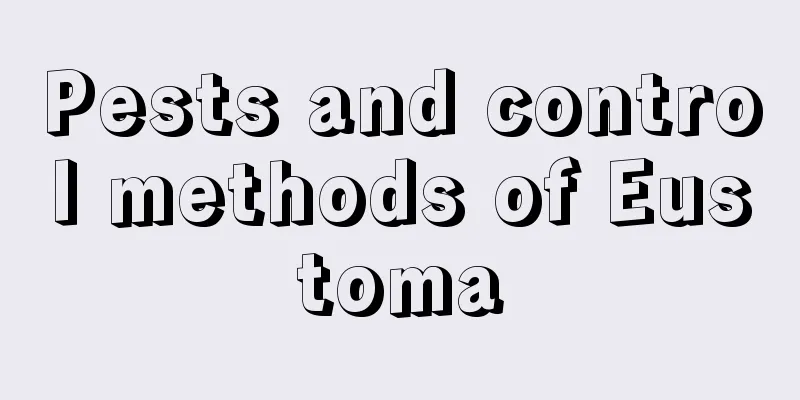Pests and control methods of Eustoma

Pests of Eustoma: AphidssymptomAphids are the fastest reproducing insects, and can reproduce 10 to 30 generations a year. Female aphids can reproduce from birth and do not need males to reproduce. Aphids use their mouth needles with sucking mouths to pierce the epidermis of plants and suck the juice from the tender leaves of the plants, causing the plants to grow slowly. The secretions of aphids also attract ants. Prevention and treatment methodsWhen breeding, pay attention to regular ventilation and light transmission to prevent aphid infestation. If the number is small, kill them manually and spray them with 1500 times diluted 80% DDT emulsion in the initial stage. If diseased plants are found, they need to be removed and destroyed in a timely manner to prevent the pests from spreading further. Pests of lisianthus: leaf rollersymptomThe adult leaf rollers have a strong tendency to sugar and vinegar. They hide on the back of leaves or in the grass during the day and come out at night. The leaf roller has a small adult body and broad forewings. It hatches its larvae at the tip of the leaf and then eats the upper epidermis and mesophyll of the leaf, but leaves the lower epidermis, causing the leaves to curl, turn yellow, and develop filmy spots. Holes will appear after the adults bite. Leaf rollers often appear in spring and summer. They hide in the leaves and continuously harm plants, seriously affecting their growth and causing delayed flowering or no flowering. Prevention and treatment methodsWhen the number of leaf rollers is small, the leaves can be removed manually to eliminate the insects. During the larval stage, you can use 1000 times diluted 75% phoxim to spray the larvae (preferably at night) or 1000 times diluted 90% trichlorfon to spray the larvae. During the adult stage, use sweet and sour liquid to lure and kill them. Mix 5 parts of sugar, 5 parts of wine, and 80 parts of water, then put the sweet and sour liquid into a bottle and hang it near the plant. Do not use dichlorvos for cleaning, as it will be harmful to the growth of lisianthus. |
<<: Common diseases and pests of agave
>>: Common Pests of Purple Jasmine and Their Control Methods
Recommend
When is the best time to take cuttings of bougainvillea (which month is the best time to take cuttings of bougainvillea)
When is the best time to take cuttings of bougain...
How to grow daylilies in spring
1. Watering In spring, daylilies' demand for ...
Advantages and disadvantages of Claire rose
Clare rose is rated as the most beautiful white r...
How to grow hosta in autumn
1. Sufficient water Autumn is still the growth pe...
Will Bauhinia bear fruit? Introduction to Bauhinia
1. Will there be any results? Bauhinia flower and...
What are the plants with special abilities?
1. Dancing Grass As the name suggests, dancing gr...
What kind of fertilizer is good for coriander base fertilizer? The function and method of base fertilizer application
The role of coriander base fertilizer When planti...
How to propagate the flower
Propagation by division Division propagation is o...
When is the best time to plant Houttuynia cordata?
Houttuynia cordata , also known as Houttuynia cor...
What are the cultivation methods and precautions of the dragon snow tree?
How to cultivate dragon snow tree The dragon snow...
Can tea be used to grow flowers?
Is it good to use tea to grow flowers? Water the ...
Jasmine's growing environment and local conditions
Jasmine growth environment and conditions Jasmine...
How to grow green radish and let it climb the wall
1. Watering and fertilizing If you want the green...
Four seasons maintenance method of torch flower
Summer maintenance tips for torch flower In summe...
Strawberry planting time and method
Strawberry planting time Strawberries like to gro...









